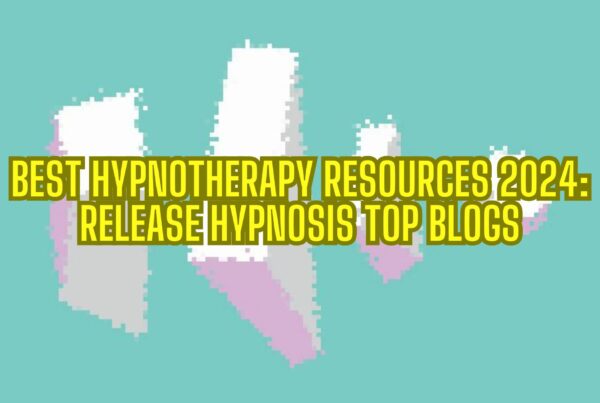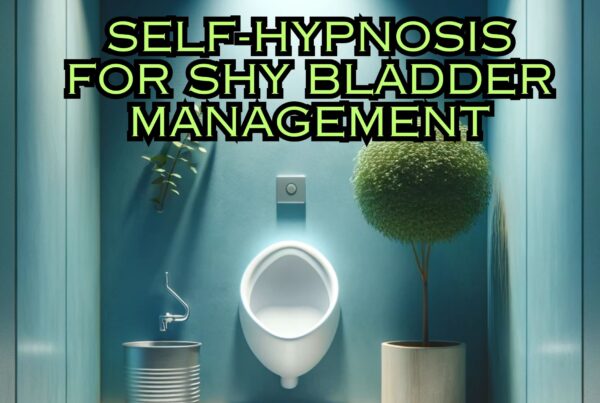Unlocking Inner Peace: The Art of Self Hypnosis at Home
The Emergence of Self Hypnosis
In the hustle and bustle of modern living, a respite is often sought in the calm and tranquillity that self hypnosis promises. While traditional hypnosis is shrouded in mystery and intrigue, its self-guided variant has steadily gained acceptance as a powerful tool for personal development and inner peace (Spiegel & Spiegel, 2004). Self hypnosis, when done correctly, can serve as a gateway to serenity, an oasis of calm amidst the desert of unease and discomfort. In this blog, we explore how you can use self hypnosis at home.
Delving into the Depths of the Mind
Embarking on the journey of self hypnosis at home is like venturing into the deep, often unexplored, caverns of the mind. Our thoughts and feelings, like stalactites and stalagmites, are formed over time, each layer revealing a little more about who we are and how we respond to the world around us (Ornstein, 1991). With self hypnosis, we can illuminate these hidden aspects of our psyche, confronting our anxieties and fostering a healthier, more balanced mental state.
Laying the Foundation for Self Hypnosis
Preparation, much like the gardener tending the soil before planting seeds, is the first step towards successful self hypnosis. Find a calm, quiet space where disturbance is as unlikely as a snowfall in the desert. This peaceful environment will help set the stage for a deeper, more enriching experience.
Equally important is the choice of time. Sunrise and sunset, when the world is in a state of gentle flux, can provide an ideal backdrop for introspection (Naparstek, 2004). However, any time that suits one’s personal schedule can be as perfect as the first light of dawn or the last glow of dusk.
The Journey Towards Inner Peace
The process of self hypnosis begins with relaxation. Like a tranquil lake, untouched by ripples, the mind must be calm and serene. Focused breathing, similar to the ebb and flow of the ocean, can aid in achieving this state. Each breath inhaled is like a wave of calm washing over the body, each exhalation a release of tension.
Once relaxation is achieved, the process of induction begins. This involves imagining a place of peace and tranquility, a mental sanctuary where the worries of the world are as distant as stars in the night sky. This mental image acts as a lantern, guiding one deeper into the caverns of the mind (Lynn & Rhue, 1991).
Next comes the stage of suggestion, where positive affirmations are gently planted in the fertile soil of the subconscious. Like sunflowers turning towards the sun, these affirmations influence our thoughts and behaviors in a positive direction (Eimer, 2012).
Lastly, emergence marks the end of the self hypnosis session. This is a gradual process, where one returns to their conscious state, much like a diver resurfacing after exploring the depths of the ocean.
The Benefits and Research
Numerous studies have found self hypnosis to be an effective tool for reducing anxiety and promoting overall well-being. For example, a study conducted by Lang et al. (2002) revealed that patients who practiced self hypnosis experienced less discomfort and anxiety. Similarly, Elkins et al. (2010) found that self hypnosis can provide relief from symptoms associated with anxiety and depression.
Seven Steps to Self Hypnosis
Let’s dive into a detailed process to help you experience self-hypnosis.
Step 1: Preparation
Choose a calm and peaceful environment free from disturbances. Set a specific time when you are unlikely to be interrupted, usually early in the morning or late in the evening when things are quieter.
Step 2: Relaxation
Sit or lie down comfortably. Close your eyes and take deep, slow breaths. Imagine each breath you take is bringing in calmness and peace, while each breath out is releasing stress and tension. Feel your body gradually relaxing, from the top of your head down to your toes.
Step 3: Induction
Once you’re relaxed, visualize yourself in a place of serenity. It could be a peaceful garden, a quiet beach, or any other place where you feel most calm. See yourself going deeper into this place with each step you take. This visualization is meant to guide you deeper into a state of relaxation.
Step 4: Deepening
Once you’re in your peaceful place, imagine yourself descending a staircase, going down an elevator, or any other imagery that symbolizes going deeper. As you descend, allow yourself to go deeper into relaxation and focus.
Step 5: Affirmations or Suggestions
Once you’re deeply relaxed, introduce affirmations or suggestions to your subconscious. These should be positive statements that address the issues you want to resolve. For example, if you’re dealing with anxiety, you might tell yourself: “I am calm and in control. I handle situations with ease and confidence.” Repeat these affirmations several times with conviction.
Step 6: Emergence
When you’re ready to end the session, visualize yourself ascending back to your original state. You might imagine walking back up the staircase, or the elevator going back up. As you do this, tell yourself that you’re becoming more alert and aware. When you’re fully ‘back’, count to three and open your eyes.
Step 7: Post Hypnosis
Take a few moments to orient yourself back to the present moment. Do not rush to get up or move around immediately. You might want to record your experience or any insights you’ve gained during the session.
Remember, practice is key in self hypnosis. The more you practice, the easier it will be for you to enter into and come out of the hypnotic state.
Other Methods of Achieving Self-Hypnosis at Home
What’s listed above isn’t the only way to do self-hypnosis. You can explore some of the other potential methods listed below. Remember, there is no one-size-fits-all approach that will work for everybody. Exploring other methods may help to find the one that works best for you.
- Progressive Muscle Relaxation: This method involves systematically relaxing each part of your body. You start from your toes, working your way up to your head, or vice versa. As you focus on each part, you consciously release the tension there, which can lead you into a state of deep relaxation and make you receptive to the hypnosis.
- Breathing Techniques: Breathing deeply and rhythmically can induce a state of relaxation necessary for self hypnosis. By focusing on the breath, one’s mind can be cleared of distractions, making it more open to suggestions.
- Visualization: This method involves creating a detailed mental picture of a calming and safe place. By immersing yourself in this visualization, you can reach a state of relaxation and open-mindedness conducive to self hypnosis.
- Counting Down: This technique requires you to slowly count down from a high number, such as 100. With each descending number, you imagine yourself sinking deeper into relaxation and closer to a state of hypnosis.
- The Eye Fixation Method: This is a classic hypnosis induction technique. You choose a spot on a wall or ceiling and fix your gaze there. As your gaze remains fixed, your eyes will naturally grow tired and eventually close, paving the way for the induction of hypnosis.
Remember, the ultimate goal of these methods is to help you reach a state of deep relaxation and focused attention where you are more receptive to suggestions. Experiment with different methods to find out what works best for you.
In the Company of Caution
While the journey of self hypnosis is largely safe, it’s important to approach it with a healthy degree of caution.
Certain individuals, particularly those with a history of mental illness, should consult with a health professional before undertaking this practice (Kirsch et al., 1995).
The Benefits of Self Hypnosis At Home
Self hypnosis at home is a practice that requires time, patience, and perseverance. It’s like learning to play a musical instrument, where each note played brings one closer to the melody of inner peace. The journey may not always be easy, but the destination, a state of tranquility and self-awareness, is worth every step.
Release Hypnosis Melbourne Hypnotherapy
Since 2015, Lawrence Akers has been working under the name Release Hypnosis offering Hypnotherapy and ACT based work to the people of Melbourne or an online service. Based on St Kilda Rd, Release Hypnosis is an easy and convenient location to get to and accessible by the ANZAC station train and tram stop. Release Hypnosis can help with a wide range of presenting issues, and I offer a free 30 minute no obligation discovery call for those who are unsure if hypnotherapy is the right way forward for them.
Book Your FREE 30 Minute Consultation With Release Hypnosis NOW!
You may also like to read:
Discovering Purpose and Values: A Path to Mental Well-being
Can’t Visualise in Hypnosis? Here’s What You Can Do Instead.
Dealing with Financial Stress and Crisis: Finding Peace Amid Turbulence
What Is The Success Rate of Hypnosis?
Release Hypnosis Melbourne Hypnotherapy is accessible for people in: Abbotsford, Armadale, Albert Park, Balwyn, Bentleigh, Black Rock, Box Hill, Brighton, Brunswick, Bulleen, Bundoora, Camberwell, Canterbury, Carnegie, Caulfield, Chadstone, Cheltenham, Clayton, Coburg, Collingwood, Deer Park, Doncaster, Elsternwick, Eltham, Elwood, Epping, Essendon, Fairfield, Fitzroy, Footscray, Glen Iris, Glen Waverley, Glenhuntly, Greensborough, Hampton, Hawthorn, Heidelberg, Highet, Ivanhoe, Kew, Kooyong, Lalor, Laverton, Lower, Plenty, Macleod, Malvern, Middle Park, Moonee Ponds, Melbourne, Moorabbin, Mount Waverley, Murrumbeena, Northcote, Oakleigh, Ormond, Parkville, Pascoe Vale, Port Melbourne, Prahran, Preston, Richmond, Rosana, Sandringham, South Yarra, South Melbourne, Spotswood, St Albans, St Kilda, Surrey Hills, Templestowe, Thornbury, Toorak, Tullamarine, Williamstown, Yarraville, North Melbourne, Windsor, East Melbourne, Melbourne, Melbourne CBD, Melbourne 3004








